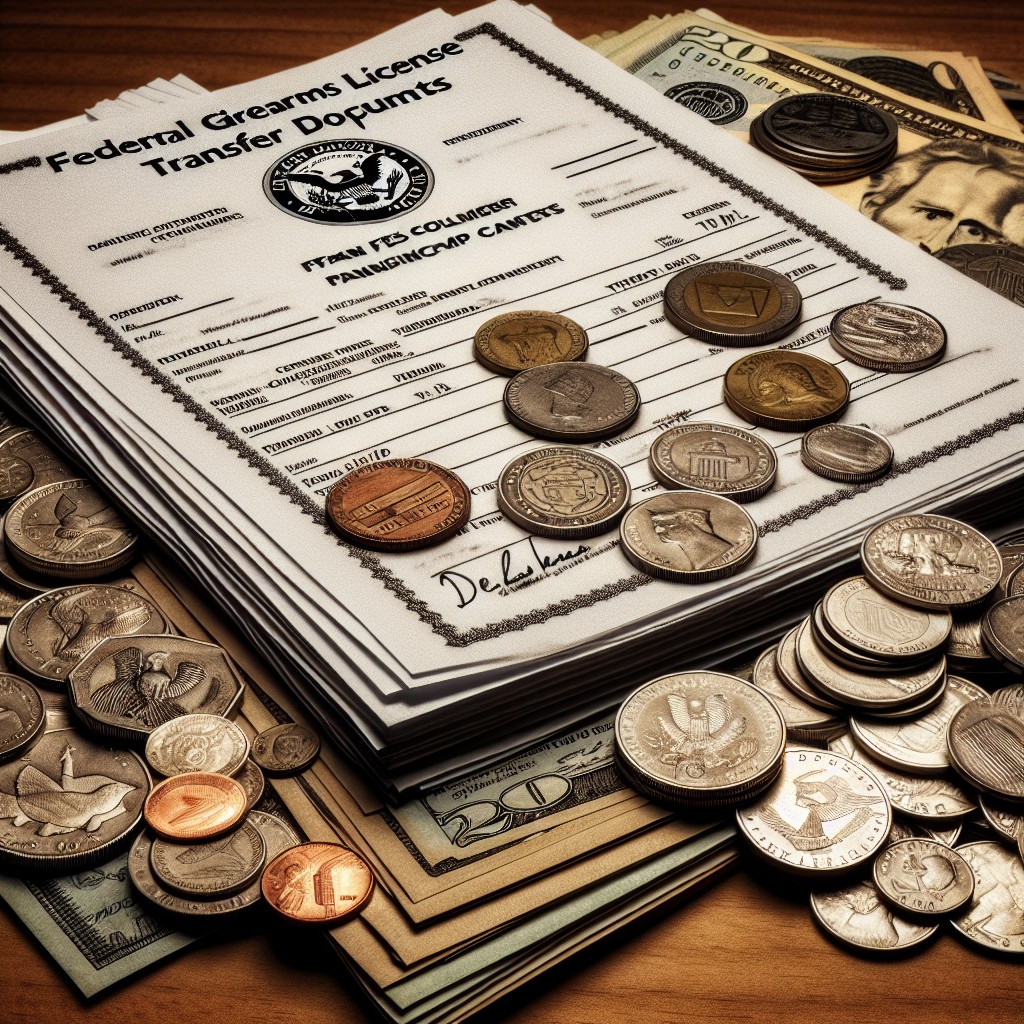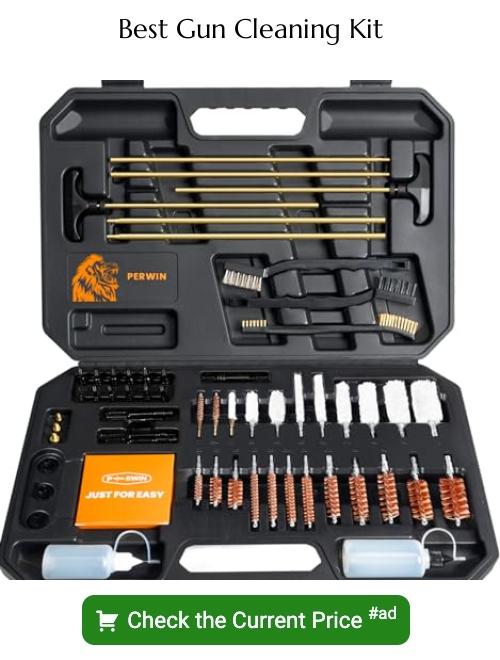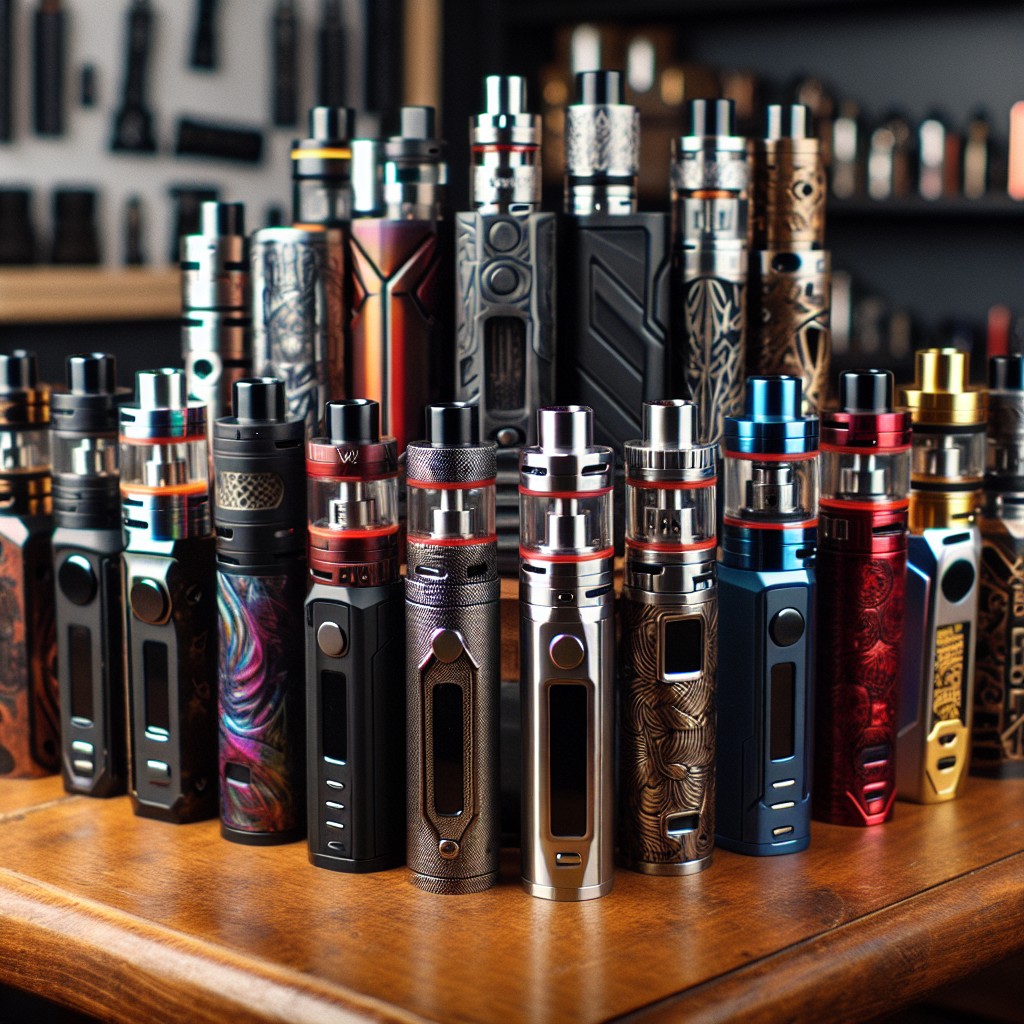Last updated on
Navigating the world of firearm transactions becomes understandable and affordable because this article exposes you to the cheapest Federal Firearms License (FFL) transfer fee, ensuring you know more without spending more.
Navigating the maze of FFL (Federal Firearms License) transfer fees requires a clear strategy to ensure you’re not overpaying – and you’ve just found your map. Whether you’re a seasoned gun owner or new to the scene, understanding the playing field is crucial, as fees can significantly differ from one dealer to another.
This is where savvy comparison shopping becomes your best ally. In this guide, we’ll help you uncover the most cost-efficient options for your FFL transfer, delve into the online treasure trove of resources and forums for recommendations, and alert you to the less obvious costs such as background checks and taxes that might catch you off guard.
Prepare to arm yourself with knowledge that could save you money on your next firearm transfer.
Key takeaways:
- FFL transfer fees vary based on location and dealer.
- Comparison shopping is key to finding affordable options.
- Online resources and forums can provide recommendations.
- Local gun stores offer personalized service but may have higher fees.
- Hidden costs to consider include background checks and taxes.
Understanding FFL Transfer Fees

Federal Firearms License (FFL) transfer fees are charges set by licensed dealers for handling the paperwork and background checks required when an individual purchases a firearm through them, especially in transfers that involve online sales or interstate private sales. These fees are necessary for maintaining compliance with federal regulations on gun sales.
An FFL transfer ensures that a firearm is legally transferred to the buyer, with the dealer taking responsibility for the federal background check.
The fee covers administrative costs, the use of the dealer’s license, and the service of conducting a background check.
Transfer fees vary based on location, dealer, and the type of firearm being transferred.
By law, all firearms must be shipped to an FFL holder if the purchase is made online or crosses state lines.
Understanding these fees is crucial in the process of acquiring a firearm to avoid any hidden costs and to ensure a smooth transfer.
Comparing FFL Transfer Costs

Navigating FFL transfer fees can be much like shopping for the best deals online – it requires a bit of research and patience. The key to finding a wallet-friendly option is comparison. Each dealer sets their own rates, and these can vary significantly based on location, type of transfer, and the individual dealer’s overhead costs.
A practical approach involves checking fees at several local gun shops and also exploring online options. Some dealers may offer lower rates for regular customers or for those who are members of their range or club. In contrast, others might have a flat rate regardless of affiliation.
When comparing costs, it’s also essential to consider the service level; some FFL holders might provide additional support during the transfer process, possibly justifying a slightly higher fee. Additionally, gun enthusiasts should be on the lookout for special promotions or discounted transfer days, which some shops offer sporadically.
A valuable resource at your disposal is online forums and community sites, where firearms enthusiasts share their experiences and recommend FFL transfer agents based on cost-efficiency and service quality. Lastly, certain websites aggregate FFL information, providing a searchable database of dealers nationwide, along with their corresponding transfer fees, helping to streamline the comparison process.
How to Find an FFL With the Lowest Transfer Fee
Searching for an affordable FFL for your firearm transfer doesn’t have to be daunting. Begin with online directories like FFL Gun Dealers or GunBroker’s FFL finder tool, both excellent resources for locating licensed dealers in your area. Don’t overlook the local or independent shops, as they often offer competitive rates to attract more customers.
It’s beneficial to call ahead. A quick conversation can give you a sense of not only the fee but also the level of customer service you might expect. Moreover, some dealers offer discounts for multiple transfers or to members of certain organizations, such as the NRA or military personnel. So inquire about any offers that might apply to you.
Gun shows can be an alternative too; dealers there might provide discounted rates as part of event promotions. And while you’re at it, tap into your social networks; online forums and local shooting clubs can be goldmines for recommendations based on recent experiences.
Lastly, consider bundling services. Some FFLs might reduce their transfer fee if you decide to purchase ammunition or accessories during the same visit. Not only do you save on transfer fees, but you might also garner savings on additional items you need.
Factors That Affect Transfer Fee Pricing
Location is a key determinant in fee variation; dealers in urban areas often charge more due to higher overhead costs compared to those in rural regions. Volume discounts may apply at high-traffic shops, potentially reducing individual fees for frequent transfers.
The complexity of the transfer can also influence the price; additional services such as NICS background checks or handling restricted firearms may incur extra charges. Membership status can play a role, with some FFLs offering reduced rates to club members or regular customers. Lastly, the time of year may affect pricing, with some dealers opting for promotions or discounts during slower business periods to attract more customers.
Local Gun Store Vs. Online FFL Transfer Costs
Comparing transfer costs requires understanding that local gun stores often have higher overheads than online FFL dealers, potentially leading to steeper fees. In-person services at these stores provide added value through personalized assistance and immediate handling of any complications that might arise during the transfer. Additionally, building a relationship with your local store could occasionally result in discounted services.
On the digital front, online FFLs typically offer lower transfer fees due to reduced operational costs and the nature of managing higher volumes of transfers. Some online services may even provide a list of their FFL network along with the corresponding transfer fees, allowing you to choose the most cost-effective option.
Keep in mind that, regardless of whether you opt for in-store or online, the actual transfer fee can vary based on the type of firearm, additional services, and the store’s location. Always call ahead to confirm the total cost and ensure no hidden charges are waiting to catch you off-guard when you’re finalizing the transfer.
Common FFL Transfer Fee Rates
Transfer fees can vary widely depending on your location and the dealer providing the service. Typically, rates range from $15 to $50 per transaction. Rural areas or locations with fewer FFL dealers may see higher fees due to limited competition. Conversely, urban regions with numerous dealers often promote competitive pricing, pushing the fees toward the lower end of the spectrum.
Many FFL dealers charge a flat rate for each transfer, while others differentiate between the types of firearms being transferred, such as handguns versus long guns, which might affect the fee. Additionally, volume discounts are sometimes available for individuals transferring several firearms simultaneously. It’s also worth noting that some dealers may offer lower rates for military members, veterans, or those with concealed carry permits as a way to give back to the community.
Understanding these common price ranges can help set realistic expectations as you shop around for the best transfer fee options. Always confirm the specific rates directly with the FFL dealer before arranging a transfer to avoid any surprises.
Hidden Costs in FFL Transfers
When budgeting for an FFL transfer, be mindful of additional expenses that may not be immediately evident:
1. Background check fees: Some FFLs may charge separately for the mandatory background check required during the transfer process.
2. State taxes: Depending on the state, taxes might be applicable to the service fee or the item being transferred.
3. Shipping costs: If purchasing from out-of-state, factor in the shipping cost to the FFL dealer.
4. Storage fees: Delays in paperwork or pickup could lead to storage charges at some FFL locations.
5. Multiple firearm fees: Transferring more than one gun can sometimes result in higher fees, either per item or as an increased flat rate.
6. Return shipping: In the event of a failed background check, returning the firearm can incur additional shipping costs.
It’s advisable to inquire directly with the FFL for a comprehensive quote and to check reviews for any mention of unexpected charges prior clients might have faced. Remember, transparency is key to avoiding surprises on your receipt.
Preparing for an FFL Transfer
Before initiating an FFL transfer, streamline the process with a few proactive steps. First, acquire the serial number, make, and model of the firearm being transferred to provide to the receiving FFL. This information expedites the identification and paperwork.
Gather personal identification, such as a state-issued ID or driver’s license, and ensure it’s current and matches the address you’ll provide during the transfer process. If you have a concealed carry permit, bring that as well since it might simplify the background check.
Reach out to the FFL holder in advance to confirm their operating hours, transfer fee, and if they require prior notice of the transfer. Also, ask about their specific procedures, as some may have online forms or specific documentation they prefer to use.
Educate yourself on the state and local regulations governing firearm transfers in both the shipping and receiving locations. This knowledge can prevent any legal complications and ensure the transfer stays within the confines of the law.
Lastly, have a method of payment ready for the transfer fee. Knowing whether the FFL accepts credit cards, checks, or only cash can save time and a potential second trip. With preparation taken care of, you can approach the FFL transfer with confidence.
Transfer Guidelines and Store Policies
Every FFL dealer will have specific guidelines and store policies you must adhere to when transferring a firearm. These establish the rules of engagement for both the buyer and the seller and ensure compliance with federal, state, and local laws. Expect provisions like:
- Required Documentation: Most shops will ask for a government-issued ID, often insisting on it being current and with the correct address. Some may require additional paperwork, such as firearm permits or concealed carry licenses.
- Background Checks: Federally-mandated background checks are non-negotiable. The FFL will initiate this process, and delays can occur if there’s a backlog or if further investigation is needed.
- Transfer Timeframe: Many FFLs detail the expected waiting period between the gun’s arrival and its availability for pickup. Take note of these times to avoid unnecessary trips or frustration.
- Cancellation and Return Policies: Know the protocol if the transfer doesn’t go through for any reason, including failed background checks, discrepancies in identification, or change of mind.
- Storage Fees: Some FFLs may charge additional fees for storing the firearm if not picked up within a set period after arrival.
- Special Orders and Restrictions: Certain types of firearms or accessories might be subject to additional scrutiny or may not be transferable at all, depending on local laws and store policy.
It’s essential to review and understand these policies to ensure a hassle-free transfer. If in doubt, don’t hesitate to reach out to the FFL dealer for clarifications before initiating the process.
What Is a Federal Firearms License?
A Federal Firearms License, or FFL, is a legal certification that enables an individual or company to engage in the business of manufacturing, importing, and selling firearms and ammunition. This license is issued by the Bureau of Alcohol, Tobacco, Firearms and Explosives (ATF).
There are several types of FFLs, each tailored to specific activities:
- Dealer FFLs: These are for businesses selling firearms to the public and can range from your local gun shop to major sporting goods stores.
- Manufacturer FFLs: Intended for entities that make firearms and ammunition, including companies that produce large volumes as well as smaller custom gunsmiths.
- Importer FFLs: They allow the licensee to import firearms and ammunition from other countries into the United States.
It’s pivotal to understand that FFLs are mandatory for any party seeking to sell guns commercially. This license ensures all transactions comply with federal laws, including background checks and record-keeping regulations. It’s also the foundation for a systematic approach to keeping firearms out of the hands of prohibited individuals while providing a secure route for legal firearm transactions.
Helpful Links
To streamline your search for competitive FFL transfer fees, a range of online resources are available:
- ATF Official Website: Stay updated with the latest federal regulations and access a comprehensive list of licensed FFL dealers in your area.
- FFL Registry: Locate FFL holders by state or zip code, filtering by those offering transfer services.
- GunBroker FFL Finder: Gun enthusiasts can use this tool to find nearby FFLs, often with listed transfer fees for easy comparison.
- Local Gun Forums and Communities: Connect with local firearms enthusiasts for personal recommendations and experiences with FFL transfer costs.
- Yelp and Google Reviews: Don’t underestimate the power of customer reviews; they can provide insights into the overall satisfaction with fees and service quality.
- Social Media Groups: Online communities on platforms like Facebook or Reddit can offer timely advice and even exclusive deals on FFL transfers.
Contact Us
If you’ve questions about FFL transfers or need guidance through the process, don’t hesitate to reach out. Whether you’re new to firearm purchases or a seasoned collector, the right advice can simplify your experience.
To get in touch:
- Seek local FFL dealers through online directories or firearm forums.
- Visit the ATF website for official information and assistance.
- Contact customer support on retailer websites for specifics on their transfer fees and policies.
- Use social media platforms to connect with firearm enthusiasts who might have valuable insights.
Community interaction is a great way to gain knowledge and tips from those with firsthand experience, ensuring you’re equipped for a smooth and cost-effective firearm transfer.
FAQ
How much does it cost to transfer a FFL in Florida?
The cost to transfer a Federal Firearms License in Florida is $35 for Title 1 and $125 for Class 3, with discounted fees for members.
Can you make money doing FFL transfers?
Yes, you can make money doing Federal Firearms License (FFL) transfers by charging a fee for handling the transaction or from the distributor.
How much is a gun transfer fee in Colorado?
The gun transfer fee in Colorado is $50, in addition to a $10.50 fee for a mandatory background check by the Colorado Bureau of Investigations.
What factors can affect the cost of an FFL transfer fee?
The cost of an FFL transfer fee can be affected by factors such as the dealer’s location, their individual pricing policies, the type and value of the firearm, and any additional services included.
Could online retailers offer better FFL transfer rates?
Yes, online retailers have the potential to offer better Federal Firearms License (FFL) transfer rates due to their lower overhead costs.
How does the FFL transfer fee compare between rural and urban areas?
The FFL transfer fee generally tends to be higher in urban areas compared to rural areas due to increased operating costs.
Recap





